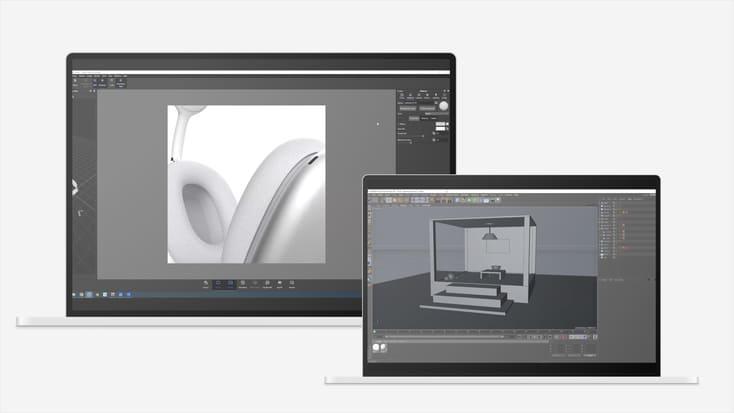Recent Posts

Streamlining Design Approvals: A New Era for 3D Workflows
Optimizing 3D Design Workflows: A Comparative Analysis of Approval Methods
Streamlining the design approval process is crucial for accelerating product development cycles and ensuring design integrity. Modern 3D workflows demand efficient, clear, and auditable methods for feedback and sign-off. We explore three primary approaches, each with distinct advantages and considerations for diverse project needs.
- Traditional File Sharing & Email: This approach involves distributing 3D models and related documents via email attachments or shared network drives. Feedback is typically compiled from various written sources, requiring significant manual effort for aggregation and interpretation by designers.
- Dedicated Cloud-Based Review Platforms: Specialized, browser-based solutions, like those offered by CoCreate Cloud, provide an interactive environment for viewing, annotating, and collaborating on 3D models. They centralize feedback, automate version tracking, and facilitate direct communication among stakeholders.
- Integrated PLM/PDM Systems: Comprehensive Product Lifecycle Management (PLM) or Product Data Management (PDM) systems embed design approval workflows directly within a broader framework. This ensures tight integration with other engineering and manufacturing processes, providing end-to-end control.
Key Evaluation Criteria for Design Approval Workflows
- Efficiency & Speed: How rapidly can design iterations be reviewed, feedback incorporated, and final approvals granted? This criterion focuses on minimizing delays and accelerating project timelines.
- Clarity of Feedback: Assess the precision and contextuality of comments. Can reviewers easily pinpoint specific model areas, and is feedback unambiguous for designers to act upon effectively?
- Version Control & Auditability: Examine the system's ability to track design changes, manage multiple iterations, and maintain a clear, immutable record of all approvals and rejections for compliance.
- Accessibility & Collaboration: Consider how easily all stakeholders, regardless of their technical proficiency or geographical location, can access designs, provide input, and participate in the review process.
Comparative Analysis of Approval Approaches
Traditional methods often suffer from significant delays. Email chains become unwieldy, and aggregating feedback from various sources is time-consuming. Clarity is frequently compromised as comments lack direct visual context, leading to misinterpretations and rework. This manual approach inherently slows down the entire approval cycle, impacting project schedules and resource allocation.
Version control in traditional setups is largely manual and prone to human error, making it challenging to ascertain the latest design or track specific changes reliably. Accessibility is limited by large file sizes and specific software requirements, often excluding non-technical stakeholders or those without specific CAD licenses from direct, meaningful participation in the review process.
Dedicated cloud platforms significantly enhance efficiency by centralizing all review activities. Real-time annotation and direct commenting on 3D models provide immediate, contextual feedback, drastically reducing miscommunication. This accelerates the feedback loop, enabling quicker design iterations and faster approval cycles, which is critical for agile development. CoCreate Cloud exemplifies this approach by simplifying complex review processes.
These platforms offer robust version control, automatically tracking every iteration and all associated feedback, creating a clear audit trail. Their browser-based nature ensures high accessibility, allowing anyone with an internet connection to participate, regardless of their device or software installations. This fosters broad collaboration across internal teams and external partners, enhancing project transparency.
Integrated PLM/PDM systems excel in efficiency by embedding approvals directly into the product development workflow. This seamless integration ensures that design reviews are a natural part of the process, minimizing separate administrative overhead. Feedback clarity benefits from structured input forms and direct links to design data within the system, ensuring consistency and completeness of information. 
PLM/PDM systems provide unparalleled version control and comprehensive audit trails, essential for regulatory compliance and complex product development. While highly accessible within an enterprise's ecosystem, their initial setup and user interface can sometimes present a steeper learning curve for external stakeholders compared to more focused review platforms, requiring dedicated training.
Recommendations for Choosing Your Approval Method
For smaller teams or projects with straightforward approval needs, traditional methods might seem sufficient initially due to their perceived low upfront investment. However, even here, the hidden costs of inefficiency, potential errors, and delayed project milestones quickly outweigh any initial savings. Consider dedicated platforms early to avoid future bottlenecks and scale effectively.
Projects requiring frequent iterations, broad stakeholder input, and rapid turnaround times will benefit immensely from dedicated cloud-based review platforms. These systems foster dynamic collaboration, ensure contextual feedback, and maintain clear version histories, significantly accelerating the design-to-approval cycle. CoCreate Cloud is ideal for such scenarios, offering agility and precision.
For large enterprises managing complex product portfolios, stringent regulatory requirements, or projects with deep integration into manufacturing and supply chains, a full-fledged PLM/PDM system is often the most suitable choice. It provides comprehensive control, traceability, and workflow automation across the entire product lifecycle, ensuring robust governance.
Sometimes, a hybrid approach works best. Utilizing a dedicated review platform for initial design feedback and external stakeholder collaboration, then integrating approved designs into a core PLM/PDM system for formal release and manufacturing, can combine the agility of specialized tools with the robustness of enterprise systems for optimal results.
Comments (4)
This article clearly outlines the advantages of modern review platforms. We've struggled with email chains for too long. Very insightful!
I appreciate the comparison, especially the point about PLM systems' learning curve for external stakeholders. That's a real consideration.